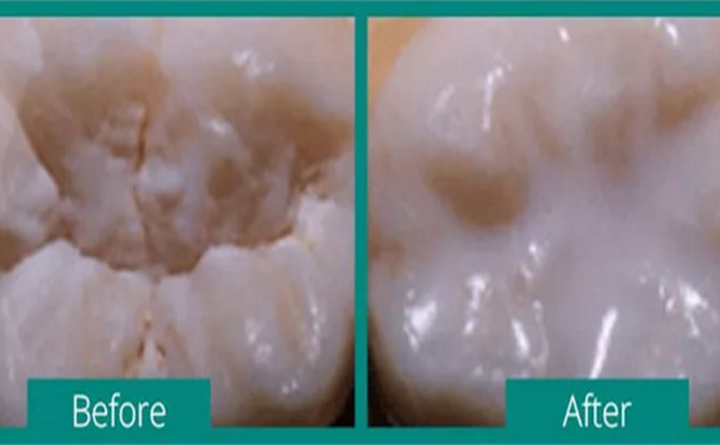
Often called “nature’s cavity fighter,” fluoride is a compound that helps prevent tooth decay.
This cavity-fighting superhero is essential from a young age – as soon as teeth erupt – to help strengthen weakened areas of tooth enamel and make teeth more resistant to bacteria.
Fluoride can occur naturally in water, but for the past 70 years, it has been added to public water supplies to bring fluoride levels up to the amount necessary to help prevent tooth decay. Research shows that optimal level of fluoride in community water is safe and effective in preventing tooth decay by at least 25% in both children and adults.
In addition, fluoride is found in many different foods and in dental products such as toothpaste, mouthwashes, gels and supplements. Combined with a healthy diet and good oral care, fluoride can be highly effective.
The following are some tips from the American Dental Association (ADA) for children using toothpaste with fluoride:
- Brush twice a day (morning and night) or as directed by your dentist and physician.
- For children younger than 3 years, start brushing their teeth as soon as they start to appear in the mouth by using fluoride toothpaste in an amount no more than a smear or the size of a grain of rice.
- For children 3 to 6 years old, use no more than a pea-sized amount of fluoride toothpaste.
- Always supervise your child’s brushing to make sure they use the right amount and try to get your child to spit out most of the toothpaste.
According to the ADA, mouthwash with fluoride can help make your teeth more resistant to decay, but children 6 years or younger should not use it unless it’s been recommended by a dentist. Many children younger than 6 are more likely to swallow it than spit it out because their swallowing reflexes aren’t fully developed.
Remember with fluoride that more is not better. Ingesting too much fluoride can cause dental fluorosis in younger children when faint lines or streaks form on teeth that are developing under the gums. Reduce the risk of fluorosis by checking the amount of fluoride in your child’s water and monitoring their use of toothpaste.


